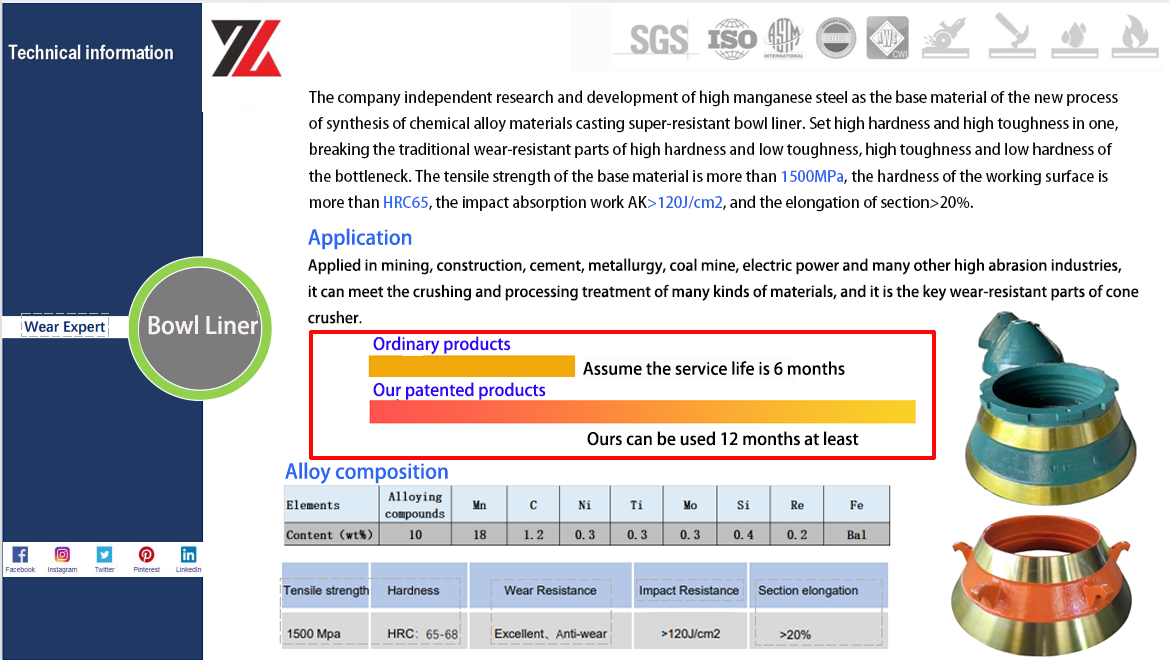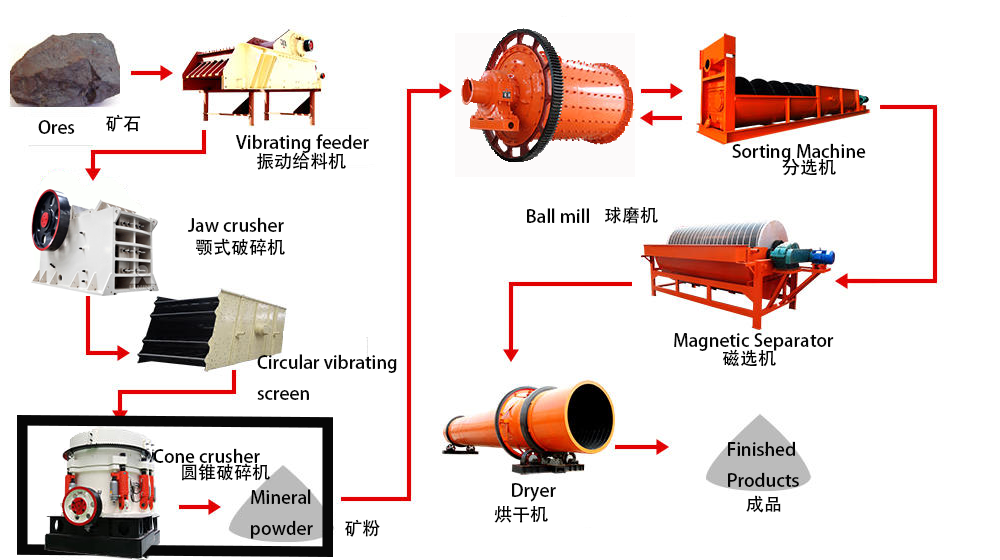
One of the main components of a crushing cone crusher, also known as a moving cone, is fixed to the body of the cone with a cone head. The broken wall of the cone is forged from a new type of composite material, which has the characteristics of wear resistance, high cost-effectiveness, and wide application fields. The conical crushing wall is fixed to the conical body by the conical head, and epoxy resin is cast between the two.
Process Introduction
1. Material selection and pretreatment
Substrate selection: First, we select high-quality high manganese steel as the substrate. High manganese steel is known for its high tensile strength and good toughness, and is an ideal choice for manufacturing wear-resistant parts.
Pretreatment: The substrate needs to be strictly pretreated before processing, including surface cleaning, rust removal and roughening to ensure good bonding between the coating and the substrate.
2. Alloying process
Combined alloy material synthesis: The company's independently developed new process with high manganese steel as the substrate combines specific elements (such as Mn, Ni, Si, Mo, Ti, etc.) with the substrate through precise chemical alloying treatment to form a high-hardness and high-toughness compound alloy material.
Casting: The synthesized compound alloy material is cast into a pre-designed mold, and after cooling and solidification, it forms the preliminary shape of the bowl liner.
3. Coating preparation
Wear-resistant ceramic coating: On the working surface of the bowl liner, a special engineering alloy is used as the coating material, and a layer of wear-resistant ceramic coating is formed through advanced spraying or dipping technology. The coating has high hardness, high toughness, high oxidation resistance, excellent wear resistance and corrosion resistance.
Coating curing: After the coating is completed, high temperature curing treatment is carried out to enhance the adhesion and hardness of the coating to ensure that it is not easy to fall off or wear during use.
4. Post-processing and testing
Machining: The cured bowl-shaped liner is finely machined, including cutting, grinding and polishing, to achieve precise size and finish requirements.
Performance testing: The finished bowl-shaped liner is comprehensively tested for performance, including hardness test, impact strength test, wear resistance test, etc., to ensure that the product meets the design requirements and technical standards.
Quality inspection: Through visual inspection, X-ray flaw detection and other means, ensure that the product has no defects such as cracks and pores, and the quality is reliable.
5. Packaging and delivery
Finished product packaging: The bowl-shaped liner that has passed the inspection is carefully packaged to prevent damage during transportation.
Delivery and tracking: Arrange delivery according to customer needs, and provide full logistics tracking services to ensure that the product is safely delivered to customers.
